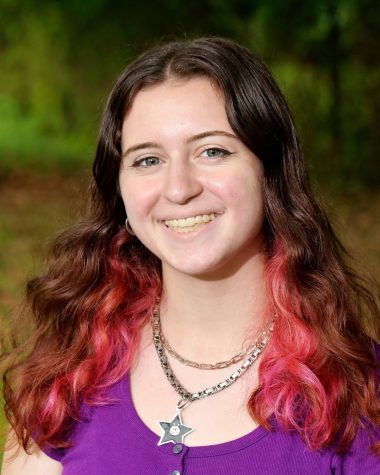Folklore
February 1, 2021
Wanting to try something new while in quarantine is natural with the monotony that comes with staying inside. Taylor Swift took trying something new to the next level when she released her surprise album, “Folklore,” which she created with Jack Antonoff and Aaron Dessner.
The album explores an entirely new genre and level of storytelling and metaphor that hasn’t been seen from Swift in the past. In particular, the album demonstrates a unique way to see into the world of conceptualizing and creating music.
On Nov. 25, Disney+ released an exclusive music documentary called “Folklore: The Long Pond Studio Sessions” in which the creators of the “Folklore” album came together in person for the first time since before the pandemic to discuss and re-record each track. They met at Long Pond Studio in New York, where the album was put together.
This film gives a window into the creation of the album and the basis behind each song. This creates a deeper and more meaningful listening experience.
There are many significant choices made by the editors that contribute to the overall aesthetic of the film. However, the most noticeable creative decision was the layout. A discussion about each track is shown, directly followed by Swift singing the re-recorded version in the studio.
This format doubled the impact of the explanation because as viewers processed the new information, they got to directly put it into the context of the track. It allowed people to see and hear the lyrics in the way they craved while keeping them in the moment of the movie. The film possessed an inviting feeling overall and maintained this energy throughout the film. As each conversation took place, it felt like the audience was listening in on a classified discussion. Swift and her co-creators Dessner and Antonoff divulged all of the pieces of their process in these talks and let listeners into their imaginations.
This is best shown in the discussion of track 6, “Mirrorball.” This discussion, which took place between Swift and Dessner, allowed her to open up about the way we see celebrities. Swift explained that “Mirrorball” is a metaphor for people who are cracking and the crowds of people who stand there and laugh, finding entertainment in others’ misery.
A large part of music is interpretation, and what it means to each individual listener is just as important as what it was meant to mean. Swift left no room for this in some of her discussions, which was off-putting for many people. This trait was most prominent in the discussion of track 14, “Betty.”
“Betty,” as told by Swift, is the third piece of a love triangle coming from a high school boy’s perspective after cheating on his girlfriend. But to much of the internet, “Betty” was a sapphic love story. When this speculation was brought up to Swift by Dessner in the film, he was almost mocking the interpretation made by fans.
While it is understandable to want to cement the meaning of a song, it feels immature to shut off fans’ interpretations.
The origin of this album was, at its core, quarantine, and that was not something Swift shied away from. She explained the large parts of making an album while quarantining, from setting up a studio in her home to the actual recording process.
While Swift was excited by the idea of a home studio and recording across the country, she also said that the re-recording at the Long Pond Studio made her realize that “Folklore” is a real album.
Overall, this documentary was a lot of fun to watch, especially for fans of Swift’s work. It was extremely eye-opening to the process of songwriting and what goes into making the final album we hear.







